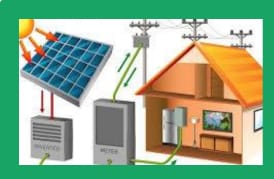Here are some solar inverter prices in Pakistan
- Inverex VEYRON 1.2 KW MPPT Solar Inverter: Rs. 80,000
- Inverex VEYRON 2.5 KW MPPT Solar Inverter: Rs. 105,000
- Inverex VEYRON II 3.2 KW MPPT Solar Inverter: Rs. 185,000
- Inverex Veyron II 6Kw 6000W-48V MPPT Solar Inverter: Rs. 290,000
- Inverex Nitrox 10 KW On Grid Solar Inverter: Rs. 340,000
- Inverex Nitrox 12Kw 48V Three Phase Hybrid Solar Inverter: Rs. 890,000
- Inverex Nitrox 15 KW 3 Phase PV Solar On-Grid Inverter: Rs. 380,000
- Inverex Nitrox 20 KW 3 Phase PV Solar On-Grid Inverter: Rs. 420,000
- Inverex Nitrox 3Kw Single Phase Hybrid Solar Inverter: Rs. 245,000
- Inverex Nitrox 6Kw 48V Single Phase Hybrid Solar Inverter: Rs. 380,000
- Inverex Nitrox 8Kw 48V Single Phase Hybrid Solar Inverter: Rs. 520,000
- Solis 6kW IP66 Hybrid Solar Inverter: Rs. 340,000
- Fox 5KW On Grid Solar Inverter: Rs. 257,250
- Fronius Smart Meter 1 phase 63-A: Rs. 45,790
- Fronius Smart Meter 3 Phase 50-KA: Rs. 30,000.In Pakistan, solar inverters are crucial components of solar power systems. They convert the direct current (DC) generated by solar panels into alternating current (AC) suitable for use in homes or businesses. When choosing a solar inverter price in Pakistan, consider factors like capacity (kW), efficiency, reliability, and warranty support. Popular brands include Huawei, GoodWe, and Infini. It’s also important to ensure compatibility with local grid standards and the size of your solar PV array.
- Here are some key characteristics of solar inverter in Pakistan
- Efficiency: Measures the percentage of DC power converted to AC power. Look for high efficiency ratings (e.g., 95% or higher).
- Power output: Measured in watts (W), it indicates the maximum power the inverter can produce.
- Voltage input range: Specifies the acceptable DC voltage input from the solar panels.
- Voltage output range: Specifies the acceptable AC voltage output for your electrical system.
- Frequency range: Specifies the acceptable AC frequency output (e.g., 50/60 Hz).
- Maximum Power Point Tracking (MPPT): Ensures optimal energy harvesting from solar panels.
- Grid tie or off-grid capability: Determines if the inverter syncs with the grid or operates independently.
- Grounding: Some inverters require grounding for safety and performance.
- Monitoring and tracking: Some inverters offer remote monitoring and tracking capabilities.
- Certifications and compliance: Ensure the inverter meets local electrical and safety standards (e.g., UL, IEEE, NEC).
- Warranty and support: Consider the manufacturer’s warranty and customer support.
- Compatibility: Verify compatibility with your solar panel array and electrical system.Certainly! Here’s a brief description for each heading:
- Introduction
A solar inverter converts direct current (DC) from solar panels into alternating current (AC), which is used by most household appliances and the electrical grid. It is essential for integrating solar energy into everyday electrical systems, making solar power usable and efficient. - Types of Solar Inverters
- String Inverters: These are used for multiple panels connected in series, offering cost-effective solutions but can be less efficient if panels are shaded or malfunction.
- Microinverters: Attached to each panel, they optimize performance individually, increasing efficiency, especially in partially shaded setups.
- Power Optimizers: Work with string inverters to optimize the performance of each panel, improving overall efficiency.
- Central Inverters: Large-scale solutions used in commercial or utility-scale systems, handling higher capacities but requiring more space and maintenance.
- Key Components
- DC/AC Conversion: The primary function of an inverter is to change DC power from solar panels into AC power usable by home appliances or the grid.
- MPPT (Maximum Power Point Tracking): This technology optimizes the power output from solar panels by adjusting electrical operating conditions to ensure maximum efficiency.
- Cooling Systems: Essential to prevent overheating, inverters use fans or passive cooling to maintain optimal operating temperatures.
- Monitoring Systems: Track the performance and health of the solar system, allowing for real-time data and troubleshooting.
- Installation Considerations
- Sizing and Placement: Properly sizing and placing the inverter is crucial for efficiency, considering factors like system size, panel orientation, and shading.
- Electrical Connections: Ensuring correct wiring and adherence to safety standards prevents potential hazards and ensures reliable performance.
- Integration with Other System Components: The inverter must be compatible with solar panels, batteries, and other system elements for effective operation.
- Performance and Efficiency
- Conversion Efficiency: This measures how well an inverter converts DC to AC power. Higher efficiency means less energy loss and more usable power from the solar system.
- Reliability and Durability: Inverters must be reliable and durable to handle varying conditions and last for many years, with features like protection against environmental factors.
- Maintenance and Troubleshooting
- Regular Maintenance: Involves periodic cleaning and inspections to ensure the inverter operates correctly and efficiently, preventing potential issues.
- Common Issues: Includes problems like inverter failures, overheating, or performance drops, which require troubleshooting and potentially professional repairs.
- Regulations and Standards
- Certification and Compliance: Inverters must meet industry standards and certifications (e.g., IEC, UL) to ensure safety, reliability, and performance in different regions.
- Safety Requirements: Adhering to safety regulations helps prevent electrical hazards and ensures safe integration into residential or commercial electrical systems.
- Future Trends and Innovations
- Technological Advances: Innovations in inverter technology include improved efficiency, integration with smart grids, and enhanced monitoring capabilities, pushing the boundaries of solar energy use.
- Integration with Smart Grid and Home Automation: Advances are enabling better integration with smart grids and home automation systems, optimizing energy use and enhancing overall system efficiency.
- Conclusion
Solar inverters play a pivotal role in converting solar energy into usable electrical power, impacting the efficiency and functionality of solar energy systems. Understanding their types, components, and maintenance needs ensures optimal performance and helps advance the use of renewable energy. - When selecting a solar inverter, consider your specific needs and priorities.Overall solar inverter price in pakistan depend on model, capacity and efficiency.
- Fronius inverter
